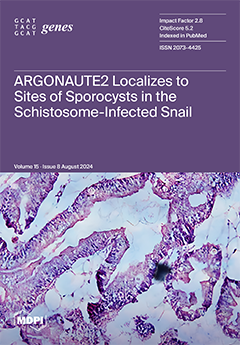Fruit weight is an important agronomic trait in pepper production and is closely related to yield. At present, many quantitative trait loci (QTL) related to fruit weight have been found in pepper; however, the genes affecting fruit weight remain unknown. We analyzed the fruit weight-related quantitative traits in an intraspecific
Capsicum annuum cross between the cultivated species blocky-type pepper, cv. Qiemen, and the bird pepper accession, “129−1” (
Capsicum annuum var.
glatriusculum), which was the wild progenitor of
C. annuum. Using the QTL-seq combined with the linkage-based QTL mapping approach, QTL detection was performed; and two major effects of QTL related to fruit weight,
qFW2.1 and
qFW3.1, were identified on chromosomes 2 and 3. The
qFW2.1 maximum explained 12.28% of the phenotypic variance observed in two F
2 generations, with the maximum LOD value of 11.02, respectively; meanwhile, the
qFW3.1 maximum explained 15.50% of the observed phenotypic variance in the two F
2 generations, with the maximum LOD value of 11.36, respectively.
qFW2.1 was narrowed down to the 1.22 Mb region using homozygous recombinant screening from BC
2S
2 and BC
2S
3 populations, while
qFW3.1 was narrowed down to the 4.61Mb region. According to the transcriptome results, a total of 47 and 86 differentially expressed genes (DEGs) in the candidate regions of
qFW2.1 and
qFW3.1 were identified. Further, 19 genes were selected for a qRT-PCR analysis based on sequence difference combined with the gene annotation. Finally,
Capana02g002938 and
Capana02g003021 are the most likely candidate genes for
qFW2.1, and
Capana03g000903 may be a candidate gene for
qFW3.1. Taken together, our results identified and fine-mapped two major QTL for fruit weight in pepper that will facilitate marker-assistant breeding for the manipulation of yield in pepper.
Full article






